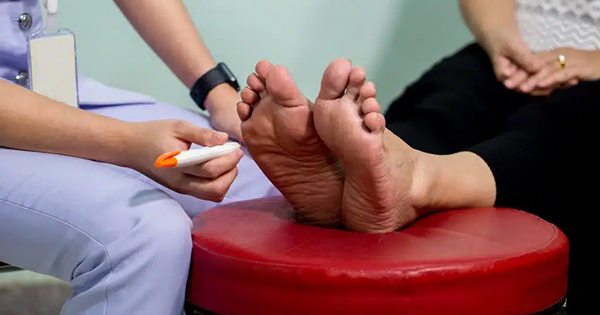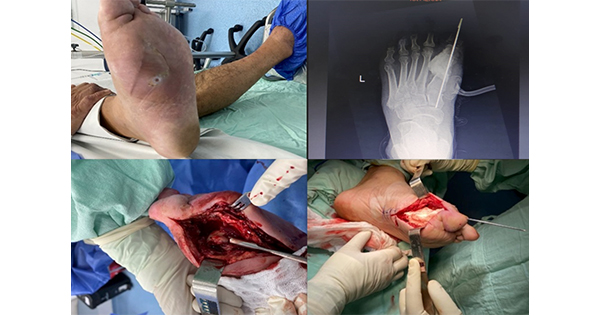Welcome to another Diabetes Digest. I hope the previous one was thought-provoking and I will attempt to do likewise with this Digest. I am going to comment upon two papers — one from the UK and the other from Turkey. While both of these are not perhaps the most robust or scientific papers, they highlight some issues that perhaps you could consider in your locality. We know that diabetic foot ulceration and hospital-acquired pressure sores is a serious complication that demands a lot from the patient and family, as well as health and social service resources. One of the biggest enemies of this complication around the world is delayed referral and lack of awareness. It is this that the two papers relate to and I would urge you to look at these from a service appraisal and structure perspective.
Peripheral arterial disease (PAD) is becoming an increasing confounding issue with foot ulcer/pressure sore management. Screening for peripheral neuropathy is now perhaps very well understood and incorporated into clinical practice. PAD, however, is much less so and dare I say perhaps even poorly understood when is comes to screening identification and referral.
A recent national UK survey by Normahani et al (2018) was undertaken of 283 podiatrists of whom the majority had 5–10+ years postgraduate experience and worked in the NHS. Although most felt they were confident enough to detect PAD, only 18.8% of participants reported using a full combination of history, pulse palpation, Doppler and ABPI assessment. Confidence in determining PAD was reported highest in podiatrists seeing >20 patients with diabetes per week. toe brachial pressure indices and transcutaneous oxygen tension measurements were uncommonly used. The majority reported using pulse palpation, history taking and doppler signals to determine PAD. Over one third of respondents (35.8%) were aware of missed cases of PAD in the past year and 17.5% (n=38/217) believed that this resulted in an amputation in some cases. Additionally, 69% (n=169/242) reported that their patients had to wait longer than 2 weeks for specialist vascular assessment and 67.6% (n=54/80) reported similar waits for a Duplex Ultrasound scan. Inability to make a direct referral to vascular services and long delays were reported as major limitations of the referral pathway. This paper, although not robust with a low sample size, does raise some important issues and points to competency appraisals and clearer clinical pathways and protocols for determining PAD.
The second paper by Kaya and Karaca (2018) is another professional survey that evaluated the knowledge levels of all 540 nurses working in the largest private hospital in Istanbul, Turkey, using a questionnaire. The questionnaire examined the levels of professional education, and nurses’ knowledge regarding diabetic foot management consisting of 68 true/false questions divided into four sections: risk factors, foot examination, foot complications and footwear. The response rate was 80.5% (435/540) which, in itself, is impressive! Although nurses thought their knowledge was adequate, 66% of the nurses did not receive any training in diabetic foot care, 77.5% did not perform foot examinations on people with diabetes and 80.9% did not provide any education to patients regarding diabetic foot problems. The authors concluded that there is a discrepancy between perceived knowledge and clinical practice highlighting the need for structured education and implementation. One of the messages of this paper is clear — evaluation of diabetic foot knowledge linked to competencies within all healthcare settings should be carefully considered and reviewed.





